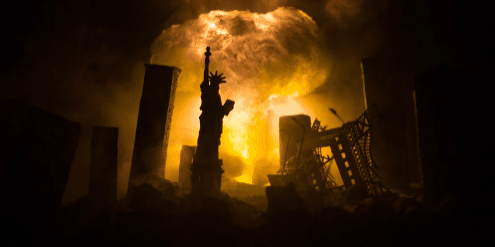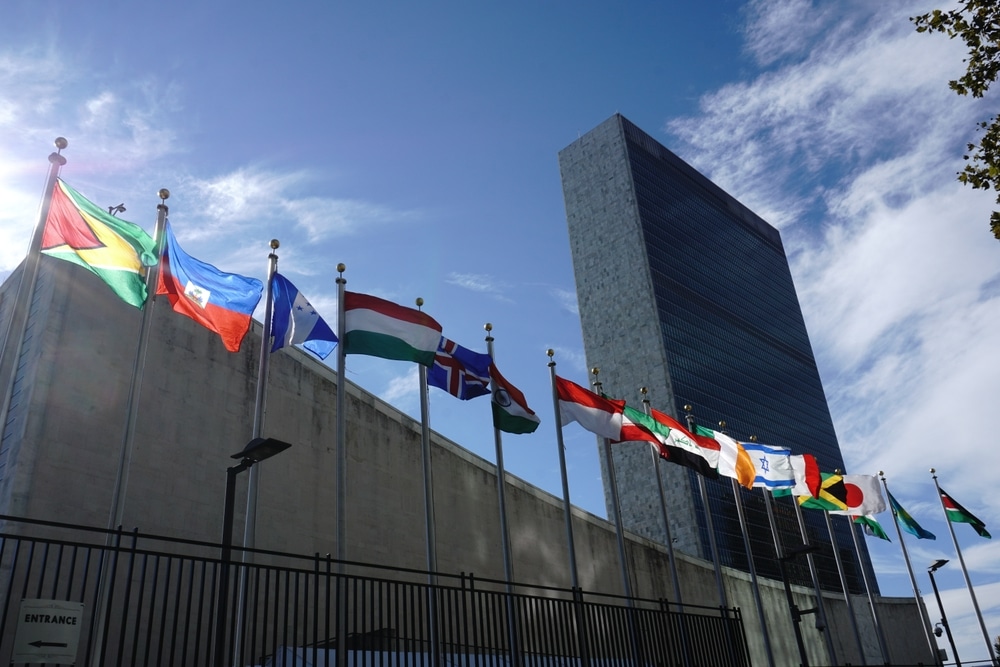
The Silent Push Toward Nuclear Conflict—And What It Means for You
When it comes to geopolitics, what you see on the surface is rarely the whole story. Ukraine’s use of long-range ATACMS missiles to strike deep into Russian territory marks a dangerous new escalation, but these strikes won't alter the trajectory of the war. The real risk lies in how Russia will respond—and whether this is part of a broader trap designed to provoke catastrophic consequences.
Just two days after the Biden administration approved their use, Ukraine fired six ATACMS missiles into Russian territory. The Kremlin reported that five were intercepted, with the sixth causing minor damage to a military facility. No casualties were reported, but what happens when the stakes are higher? What happens when Russian cities or critical infrastructure are targeted?
A Game of Escalation
Russian Foreign Minister Sergey Lavrov wasted no time pointing fingers, asserting that the use of these high-tech missiles is impossible without direct U.S. involvement. His comments were a chilling reminder of how closely the world’s two largest nuclear powers are inching toward direct confrontation. Lavrov framed the attack as a joint operation between Ukraine and the United States, escalating tensions further.
This isn’t just saber-rattling. On the same day, Vladimir Putin signed updates to Russia’s nuclear doctrine, underscoring that nuclear weapons could be used in response to aggression involving conventional weapons if it threatens Russian sovereignty. The timing of this decree was no accident—it’s a warning shot aimed directly at Washington.
The updated doctrine explicitly states that attacks involving a non-nuclear state but supported by a nuclear state—like the current situation—will be treated as a joint assault. And while most Western leaders dismiss the idea of Russia resorting to nuclear weapons, Moscow’s actions suggest otherwise.
The Nuclear Domino Effect
If Russia perceives that its red lines are being crossed, how might it react? One plausible scenario is a limited nuclear strike against Ukraine. The Biden administration has signaled that such an act would trigger a U.S. response in kind, likely involving tactical nuclear weapons in Ukraine. This sets the stage for a catastrophic spiral—a direct war between the U.S. and Russia, with global elites pulling the strings.
Consider this: If a broader conflict is triggered before the next U.S. presidential election, it could hand immense power to those benefiting from perpetual war. A prolonged U.S.-Russia confrontation would become a fait accompli, difficult to reverse even if a more peace-oriented administration were to take office in 2025.
This is not speculation. As The Economist forecasted, the Ukraine conflict will dominate headlines in 2025, and prominent global players seem eager to escalate. Alex Soros, a prominent figure in globalist circles, recently celebrated the green light for long-range missile strikes. The war fever infects not only Democrats but many Republicans too, with hawks like Mitch McConnell advocating for aggressive U.S. involvement and dismissing fears of escalation as “unsubstantiated.”
Russia Prepares for the Worst
While Washington assumes the Kremlin is bluffing, Moscow is acting as though nuclear war is inevitable. Serial production of mobile bomb shelters capable of withstanding nuclear blasts has reportedly begun. The message is clear: Russia is preparing for the unthinkable, even as Western leaders downplay the risks.
This hubris could prove fatal. Many in the U.S. assume that Russia shares our reluctance to initiate a first strike. But history is littered with tragic miscalculations. For Russia, the logic is different—they believe that if a nuclear war becomes unavoidable, the first to strike has the best chance of survival.
What Comes Next?
The long-range missile strikes are unlikely to win Ukraine the war, but they might achieve something far more sinister: dragging the United States into a direct conflict with Russia. For global elites and defense contractors, this is a windfall. For the average citizen, it’s a disaster waiting to happen.
This brinkmanship reveals a deeper truth: our political and financial systems thrive on instability. Every missile launched, every dollar spent, and every provocation pushes us closer to a world where individual freedoms and economic security become collateral damage. The question isn’t whether another war will happen—it’s whether you’re prepared for what comes next.
Prepare Yourself Before It’s Too Late
In these uncertain times, protecting your wealth and independence is paramount. Governments and financial institutions have proven their willingness to sacrifice individual citizens for the sake of power and control. Don’t wait for the next crisis to act. Download Bill Brocius’ free guide, “Seven Steps to Protect Yourself from Bank Failure”, and learn how to safeguard your assets in a volatile world: Click Here to Download.
For deeper insights, subscribe to Bill’s Inner Circle newsletter for just $19.95/month. Get the tools and strategies you need to navigate financial uncertainty and thrive in a collapsing system. Don’t let the elites dictate your future—take control today.











